The Seven Circuits of a Pearl
March 9, 2023
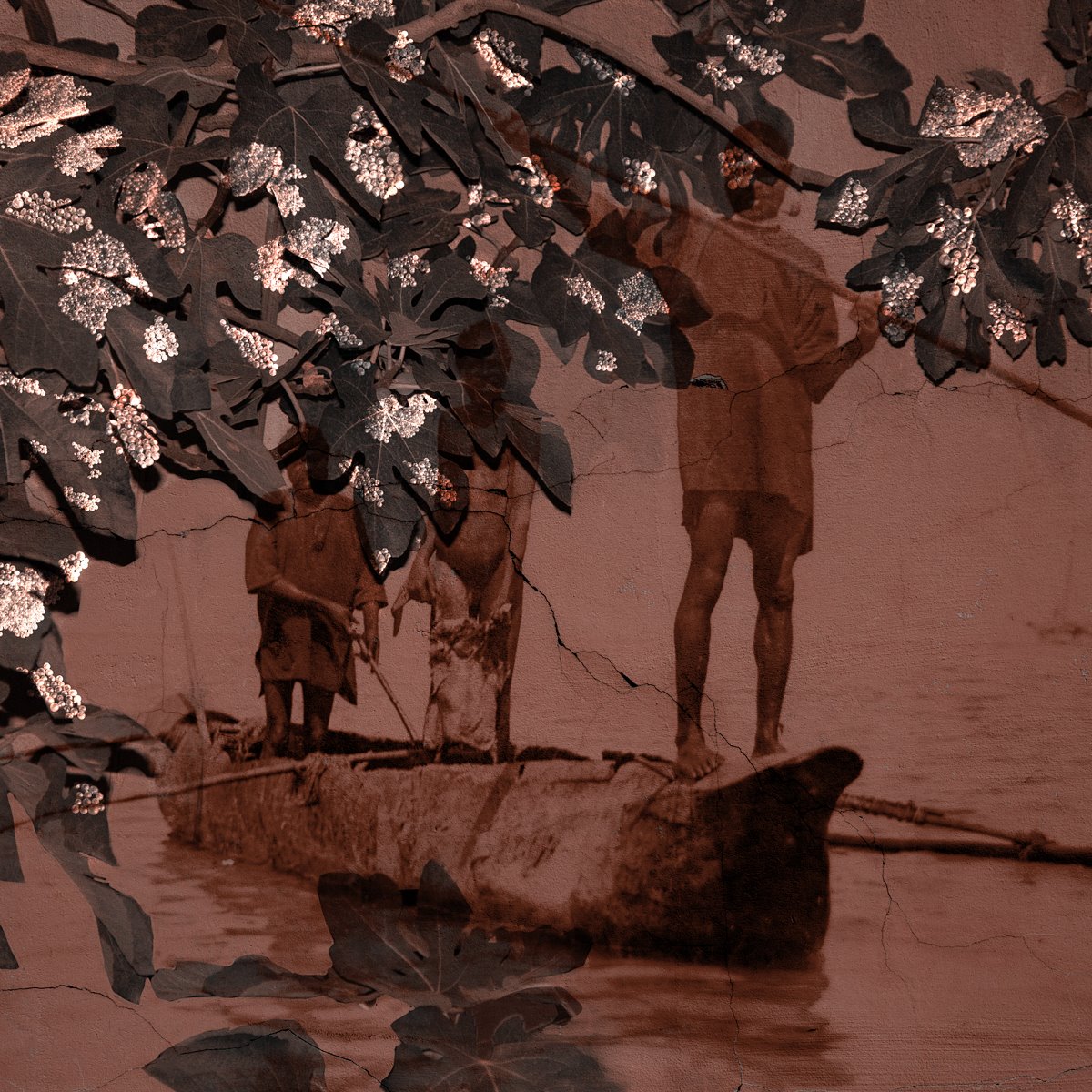
This is an image of Torres Strait Islander kids on a dinghy with the intervention of a fig tree with pearls integrated into it. The work, overall, reflects on human relationships to the sea and the consequent cultural worlds, historical narratives and set of practices built around geographies and ecologies of the ocean through centuries. © Ioanna Sakellaraki
The Seven Circuits of a Pearl is a journey through the early Australian pearling industry; one of pioneers, explorers, piracy, shipwrecks, cyclones, death, wealth, secrecy and power. The story begins on the faraway coast of Western Australia, where the Indian Ocean meets the Great Sandy Desert, and where peoples for thousands of years have shared a sense of fascination and mystery with pearls and pearl shell as objects of desire and personal adornment, combing the waters of the ocean, risking their lives in search of these precious gems which unlike others are the actual products of living animals; the mollusks.
Like another living vessel of refracted time and memory, the archive of the journeys for pearls sails me back to the journeys of my late father as seen through his own personal archives during his time as a sailor and later on marine engineer in the faraway lands he explored. Driven by curiosity and captivated by the trove of an image of a woman with a pearl necklace found in them, I begin the journey towards the painful discovery of my father’s ex-wife and mother of a half-brother I have never met.
A journey of multiple paths of deception, the topology of the plot borrows from the archetype of the 7-circuit Cretan labyrinth as a pattern of movement though the different narrative paths, twists and crossings, connecting untold stories of personal and collective loss. Maritime disasters, archeological, personal and missing evidence, become the thread between visual and textual material from museum collections, journals, diaries and memoirs researched, and further re-imagined though the mixed-media works produced, aiming at creating an interrelational space amongst the fragments of a larger narrative progressing from an investigative to a more metaphorical and esoteric resolution.
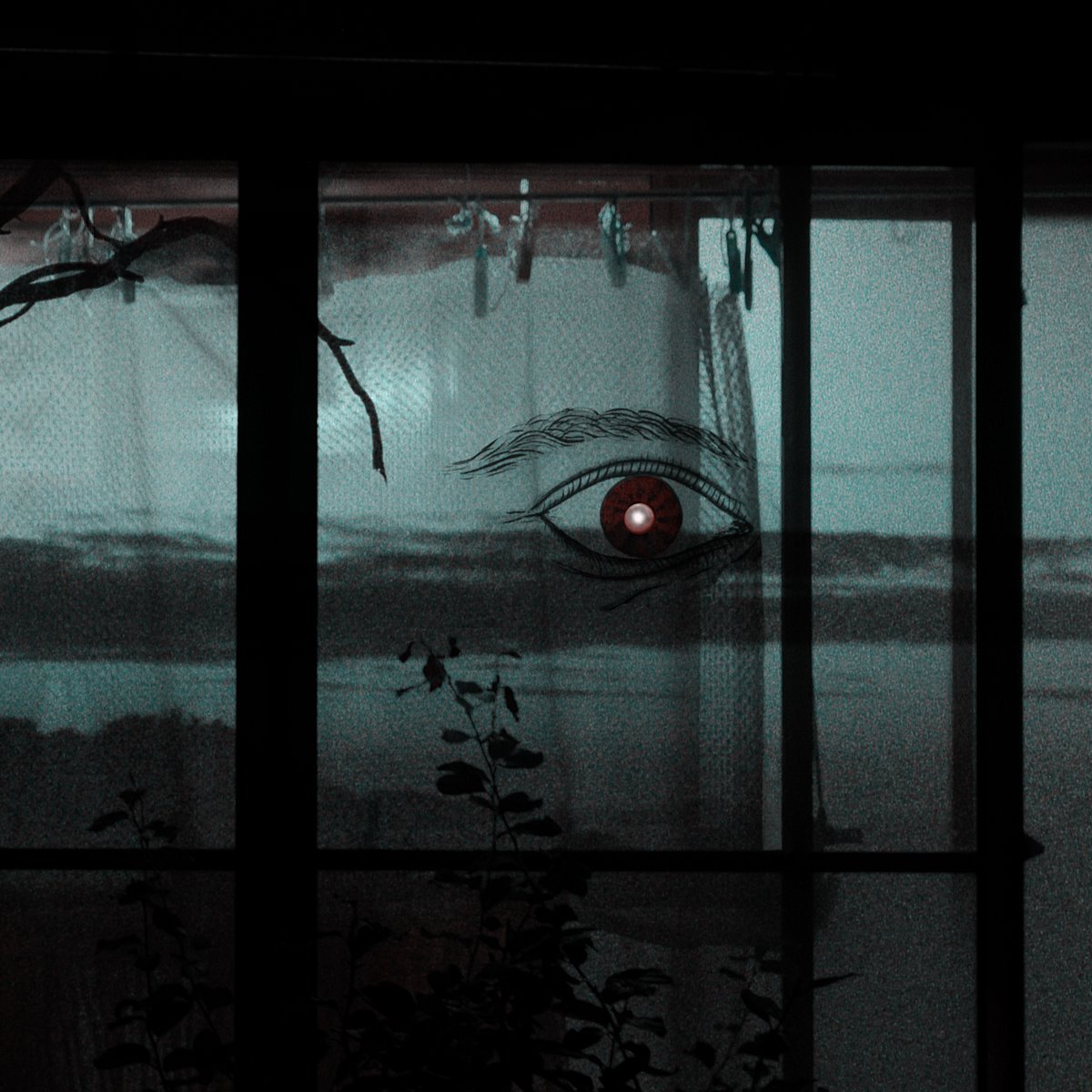
This image speaks of the optical properties of pearls due to both reflection and refraction of light and connects with a big part of my work around enigma and vision, light and knowledge that are further explored through my mixed media works with the repetitive motif of the ‘eye’ and ‘gaze’ in some of the images. © Ioanna Sakellaraki
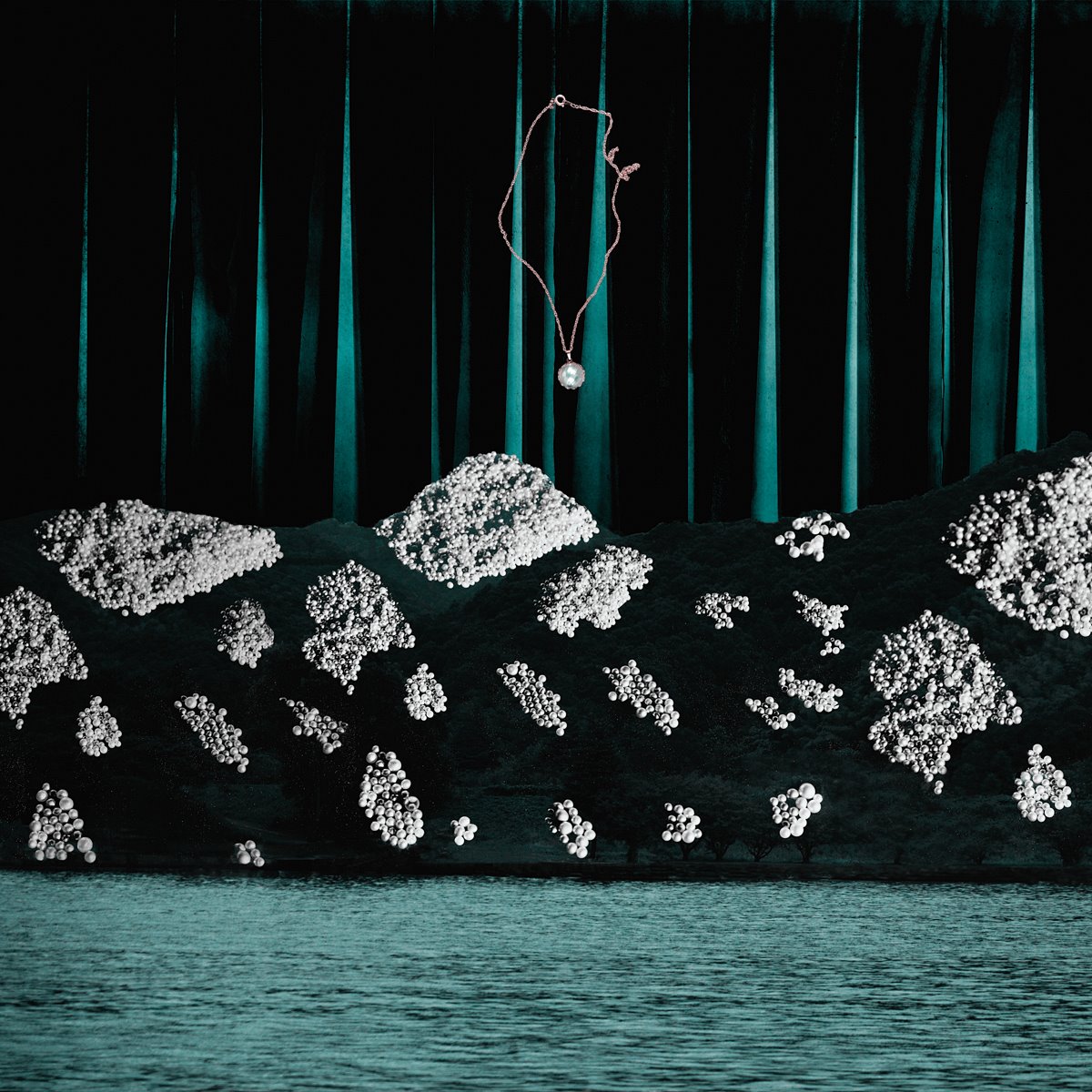
The background landscape of this lens-based work was shot on Thursday Island where the seaway between Coral and Arafura Seas is situated. By 1870, Queensland pearlers had established an industry in the Torres Strait with Thursday Island being a main center of their pearling activity. © Ioanna Sakellaraki
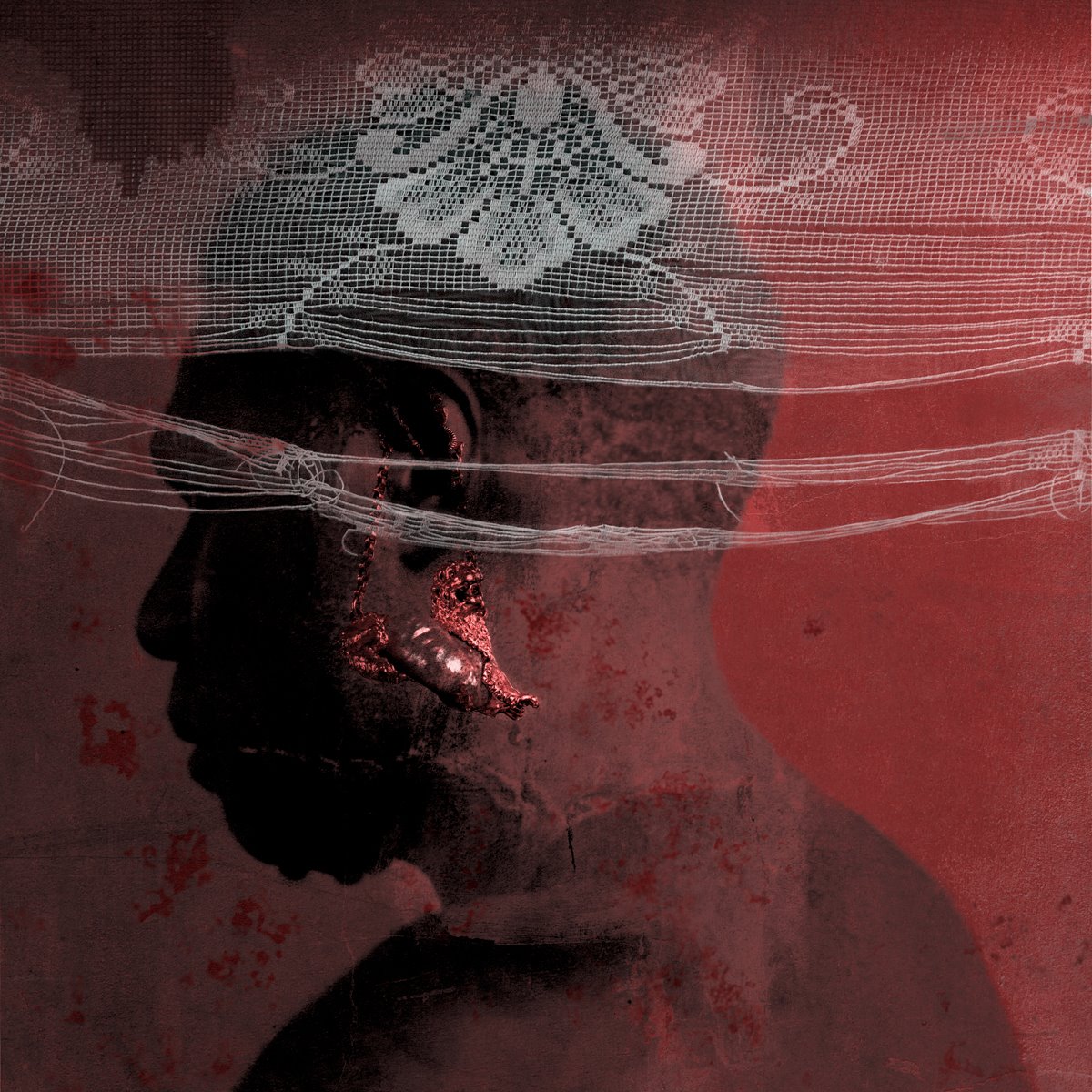
This is an image of an Aboriginal diver with a pendant of a wounded lion, its body consisting of a large baroque pearl pierced by a golden arrow. Torres Strait Islanders and Aboriginal People were often forced into diving for pearls, required to bring back at least ten pairs of shell per day. The work was hard and often deadly, especially before the hard- hat diving was introduced. © Ioanna Sakellaraki
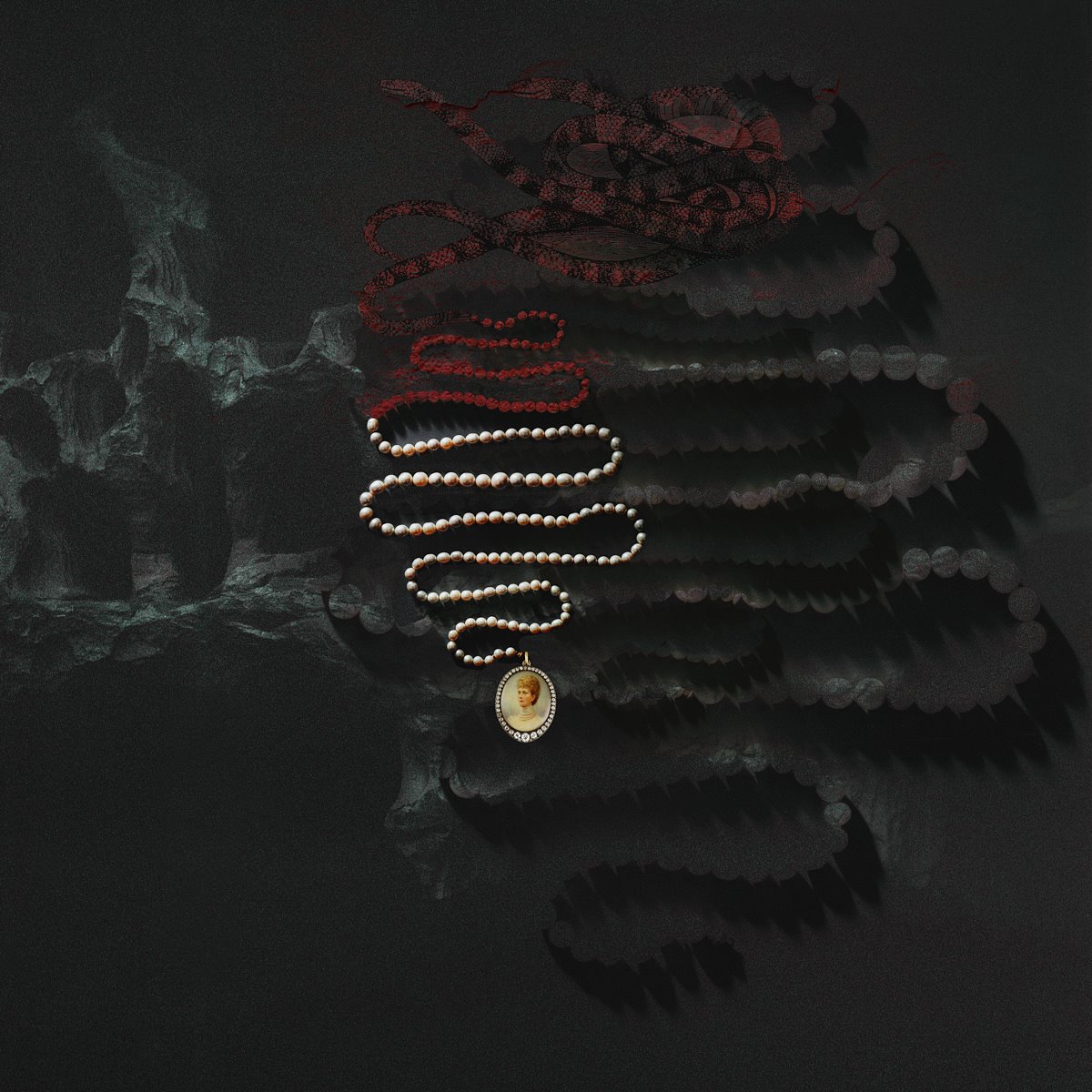
Snakes are a cosmological element here. They are inhabitants of the landscapes I photograph and are indigenous to all parts of Australia featuring strongly in the Creation stories held by Aboriginal people. The snake in this image leaves a trace by intermingling with a pearl necklace of 177 pearls whose imprint remains as a shadow in the background aiming at opening up a scene of a mystery. © Ioanna Sakellaraki
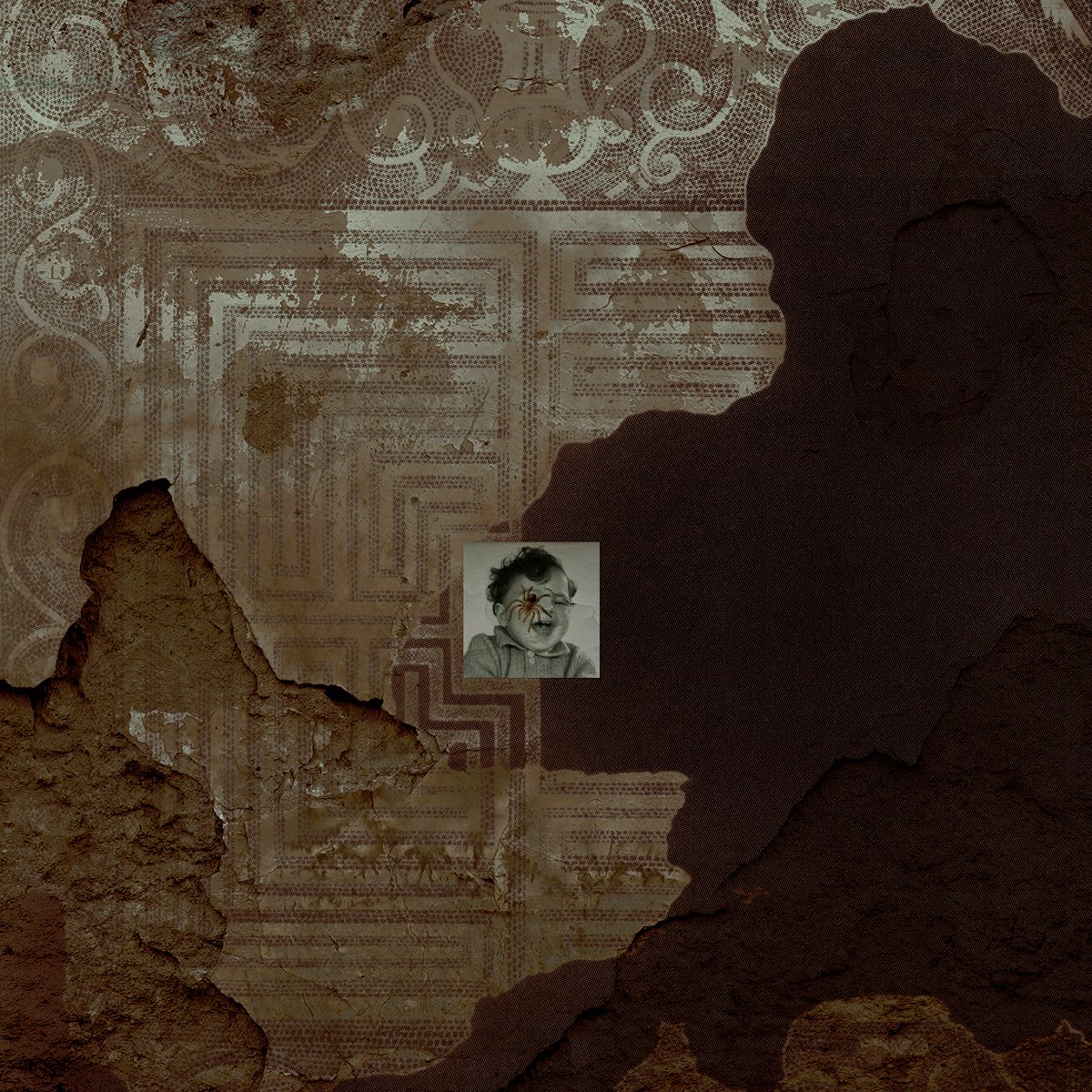
This is an image of a mosaic labyrinth from the third century CE with a portrait of the unknown to me half- brother in the center of it with a tarantula brooch with a very unusual 27mm oval conch pearl in its abdomen placed on the boy’s face. © Ioanna Sakellaraki
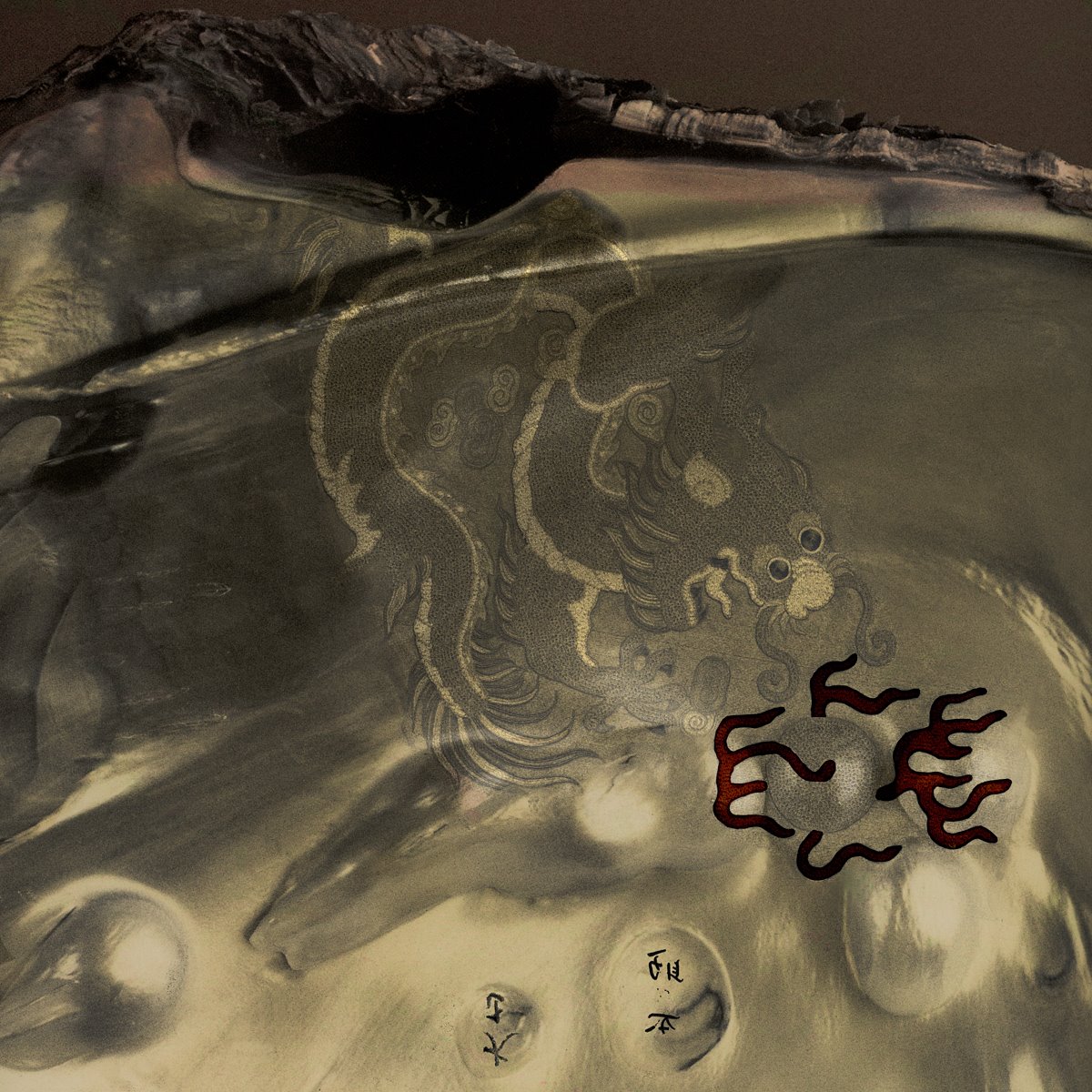
This image is of an oyster shell with blister pearls, recalling part of Asian mythology on the flaming pearl as the representation of the celestial luminary and eternal pursuit of wisdom. The Japanese letters on the two pearl formations in the lower part of the image, are fragments of letters captured on Japanese divers’ graves on Thursday island cemetery. Many divers, mostly Japanese, who were reputed to be the best, lost their lives. This cemetery commemorates over 700 Japanese pearlers and their families who died in the Torres Strait. © Ioanna Sakellaraki
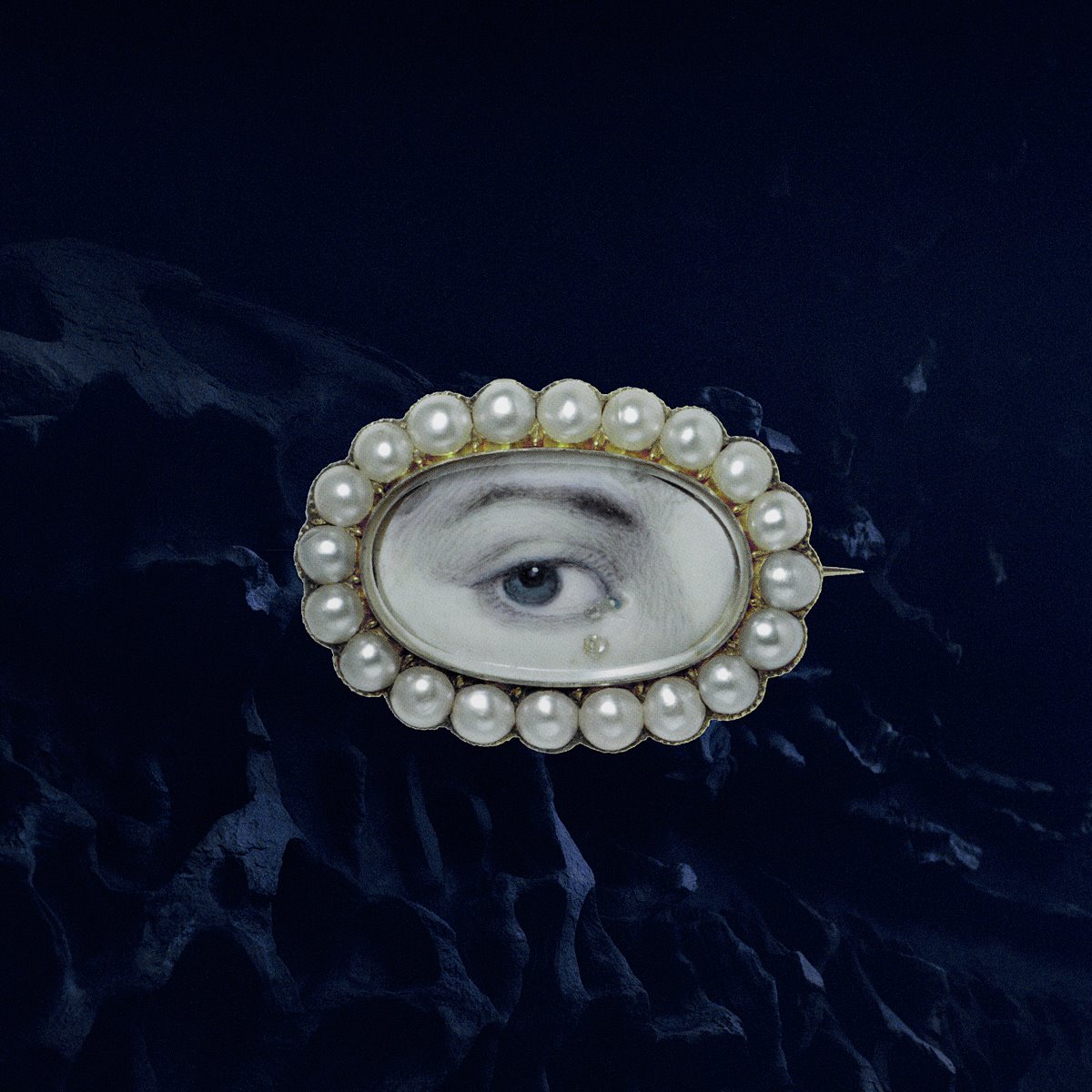
This image includes an eye miniature from the 1800s with one eye being hand painted inside the miniature, described as the lover’s eye: either a loved token or a memory of a deceased one watching over those still alive. The eye stands on the rocky caves of a Western Australian landscape. © Ioanna Sakellaraki
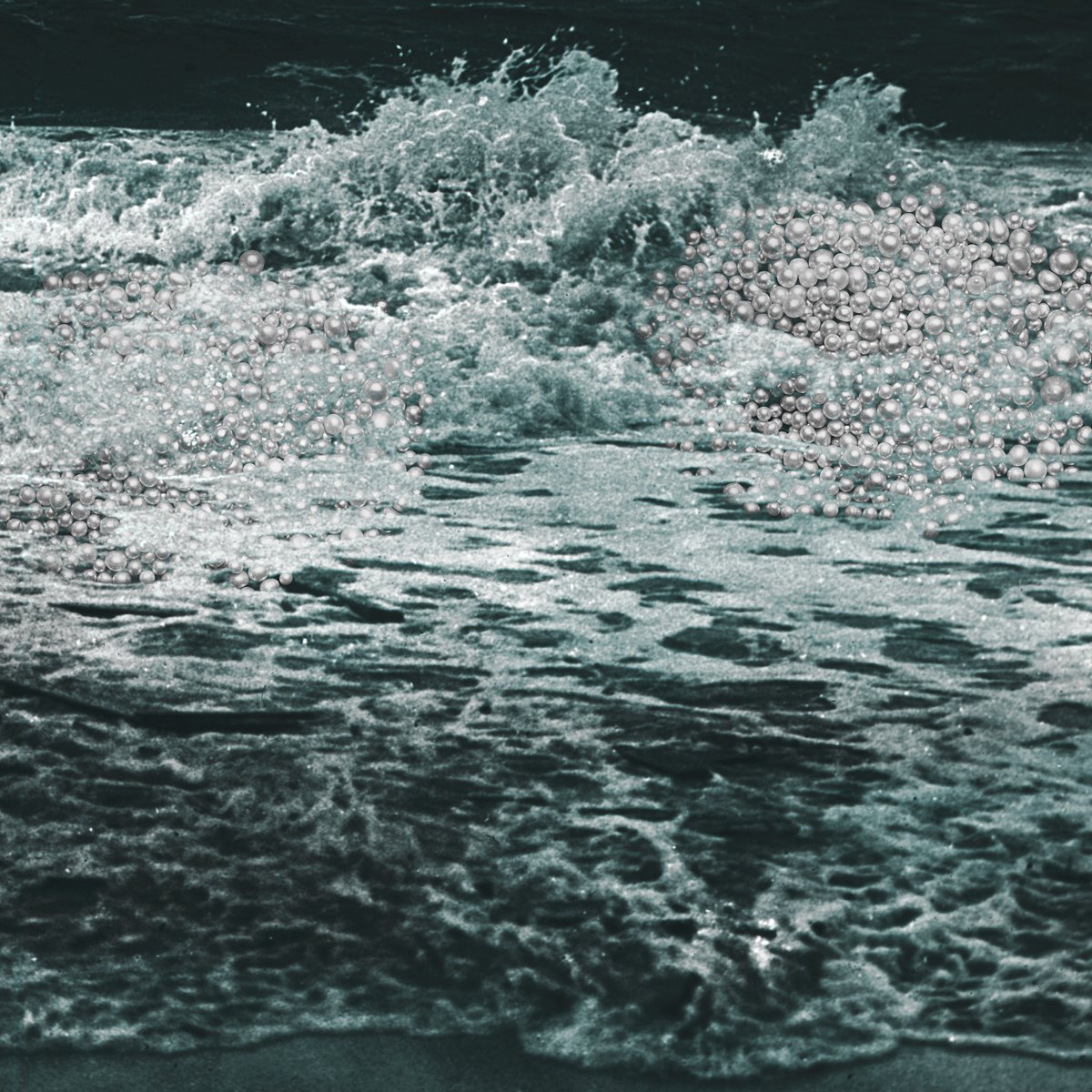
This is an image of the Indian Ocean with integrated Australian pearls appearing on the crashing waves. © Ioanna Sakellaraki
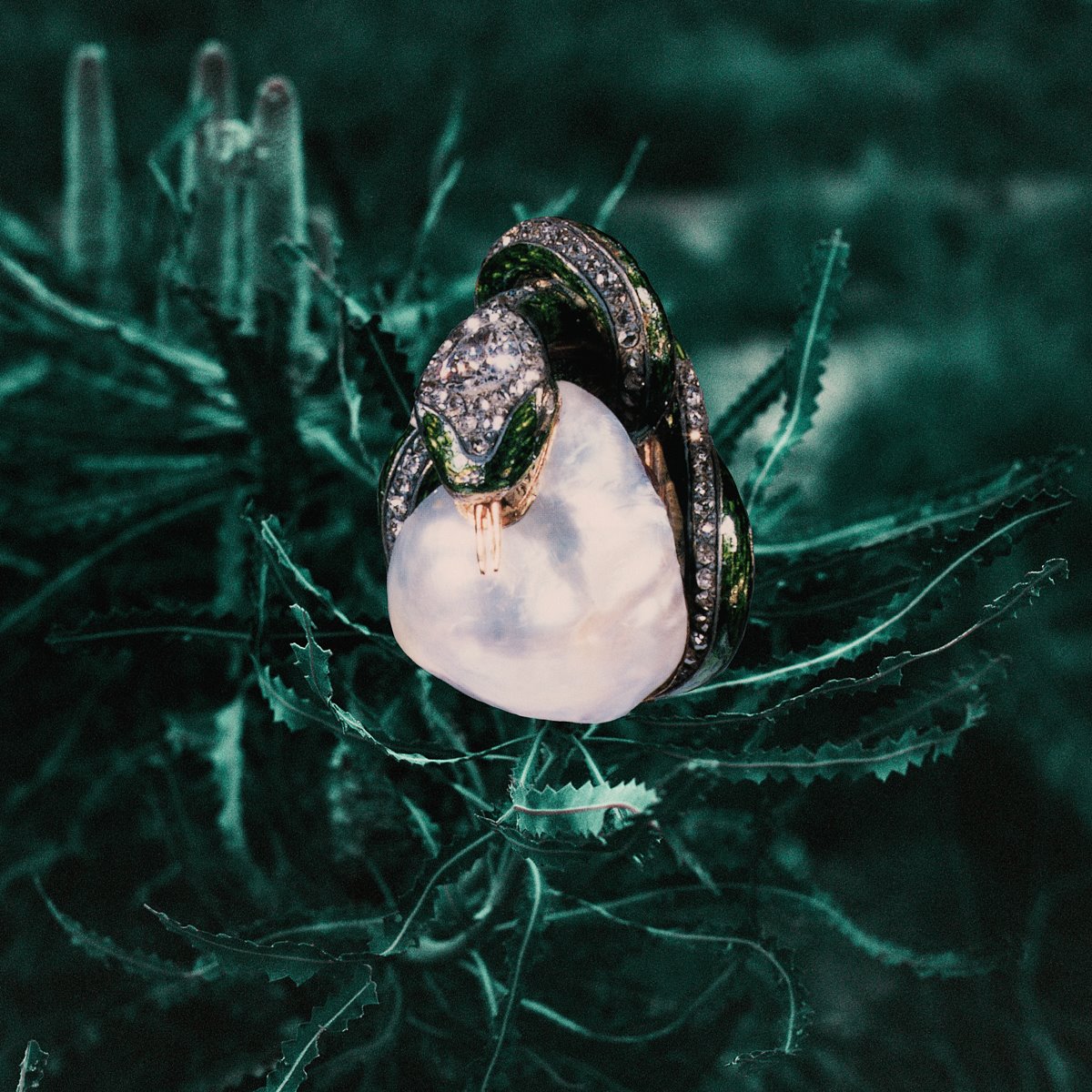
This image comes from a snake- topped stickpin from the mid-19th century with a very large baroque pearl, mixed in with a tropical rainforest landscape connecting to the recurring motif of building an emergent space that functions both as a shelter and a perilous threshold in my images. © Ioanna Sakellaraki
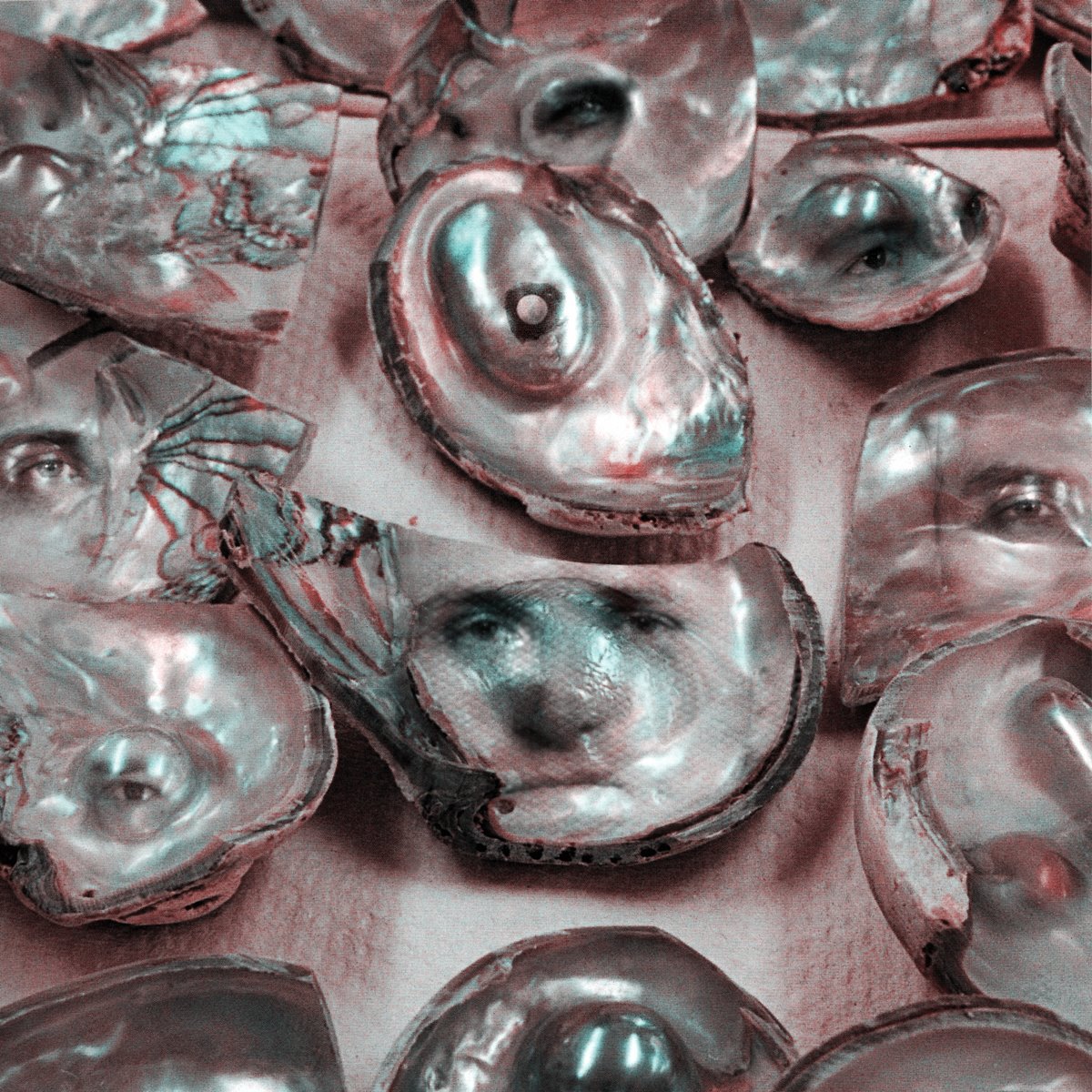
This is an image of newly cut mabé pearls with the gazes of dead sailors and pearl divers from variousarchives integrated on them. © Ioanna Sakellaraki
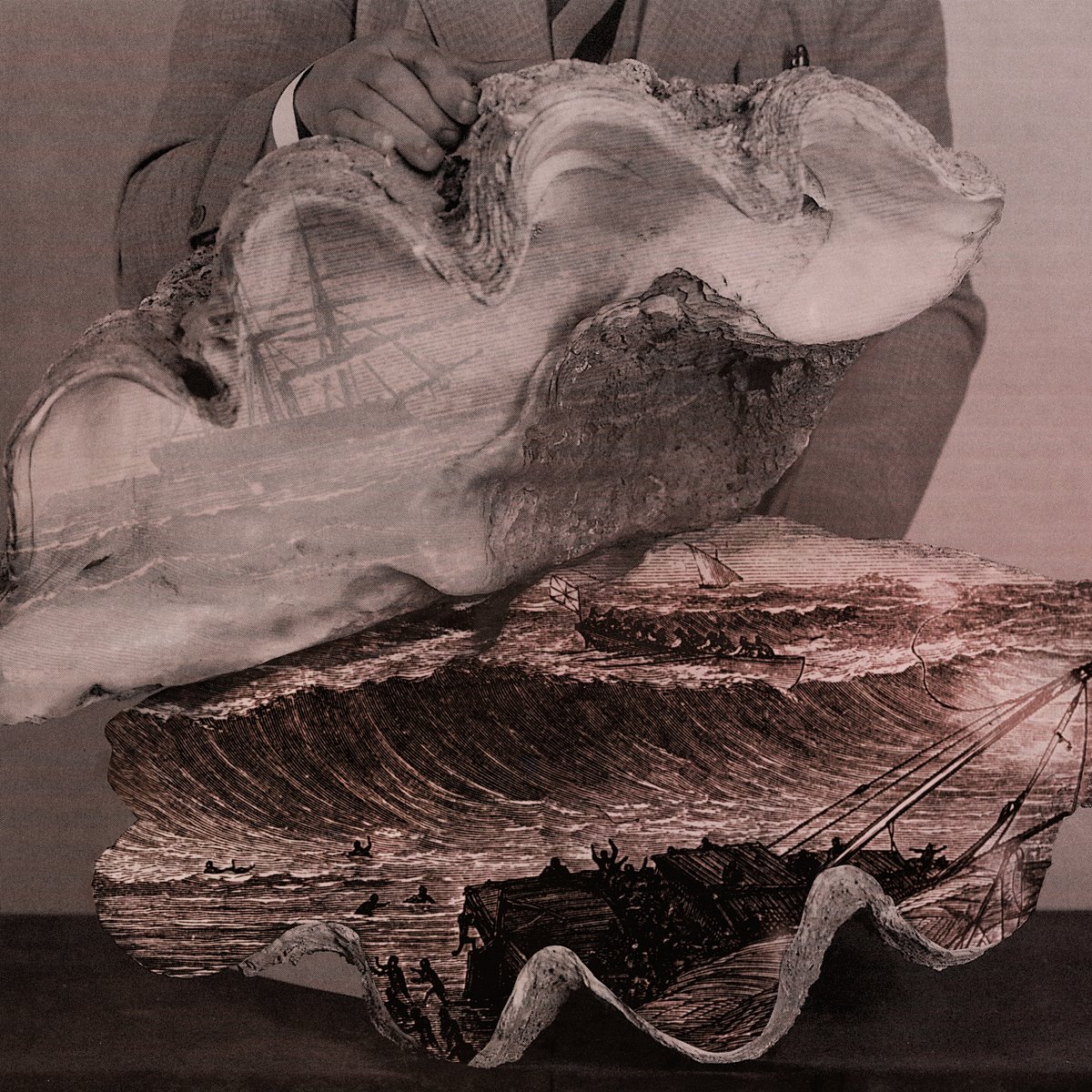
This is an impression of the numerous shipwrecks caused by tropical cyclones while the pearling fleet was out in the sea with divers and crew risking their lives. More specifically, it refers to the great cyclone on Eighty- Mile Beach, off Broome, Western Australia, that took place between 26 and 27 April 1908, during which 44 luggers were lost. The shipwreck frame takes place within an archival image of the largest recorded Pearl Shell in human history. © Ioanna Sakellaraki
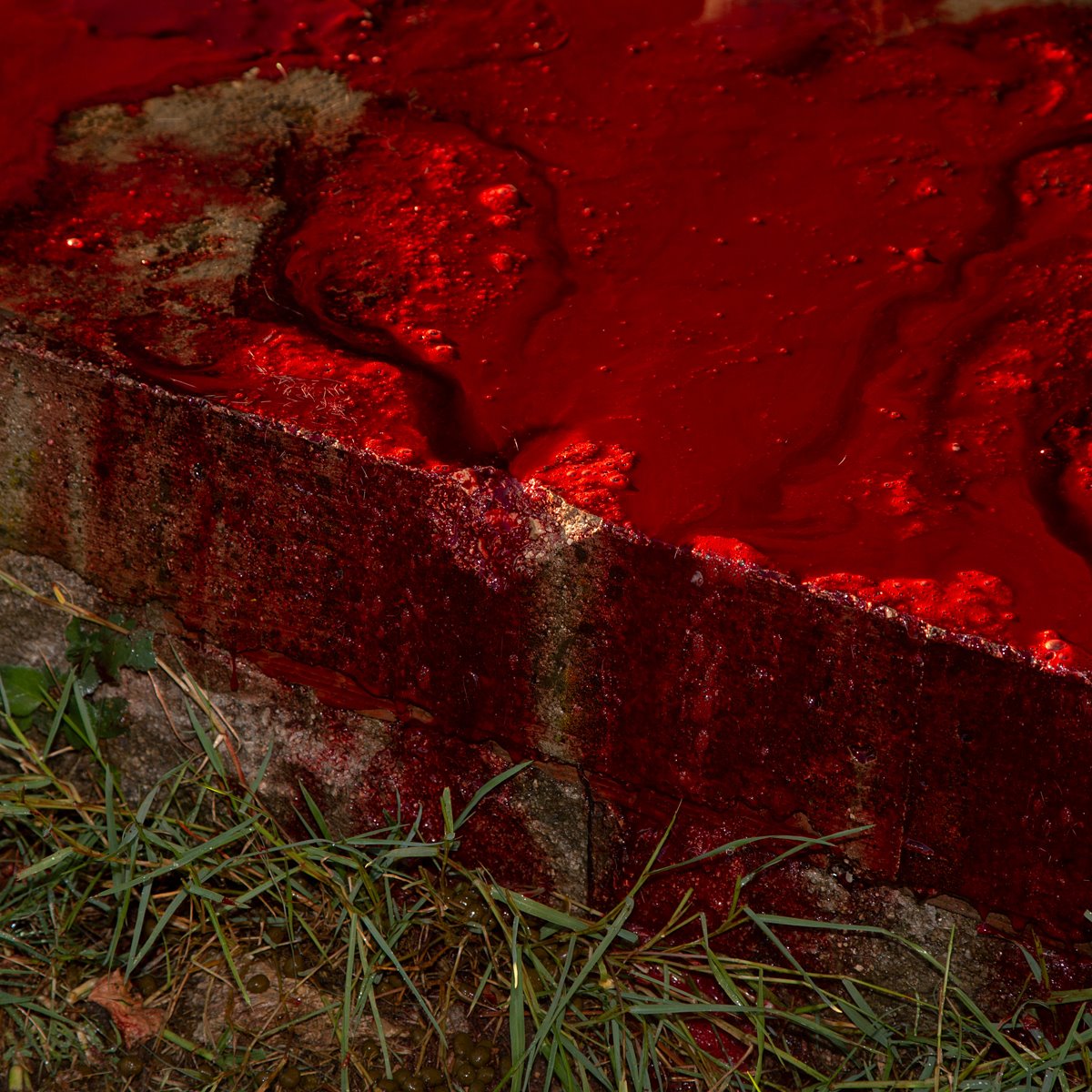
This is an image suggestive of the lives lost in the pearling industry in Australia. © Ioanna Sakellaraki
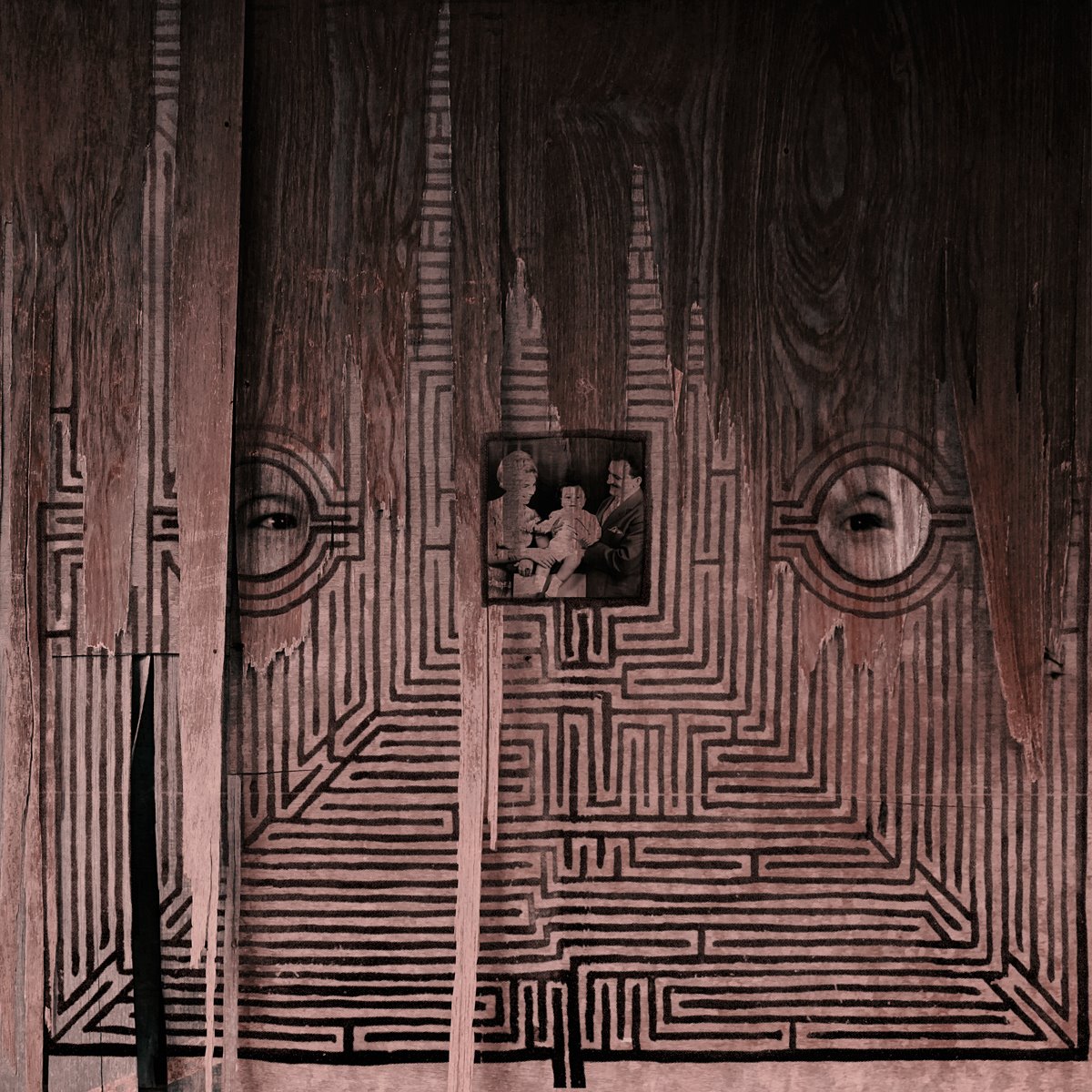
This image is suggestive of the archetype of 7-circuit Cretan labyrinth I use for describing the transformational journey towards witnessing in the archive, with the crossing of the concentric circles of the labyrinthine structure being suggestive of the many narrative twists encountered in the plot until the moment of discovery; the final central nucleus of the story. In the center of the labyrinth is a portrait of my father with his ex-wife and my half-brother. © Ioanna Sakellaraki
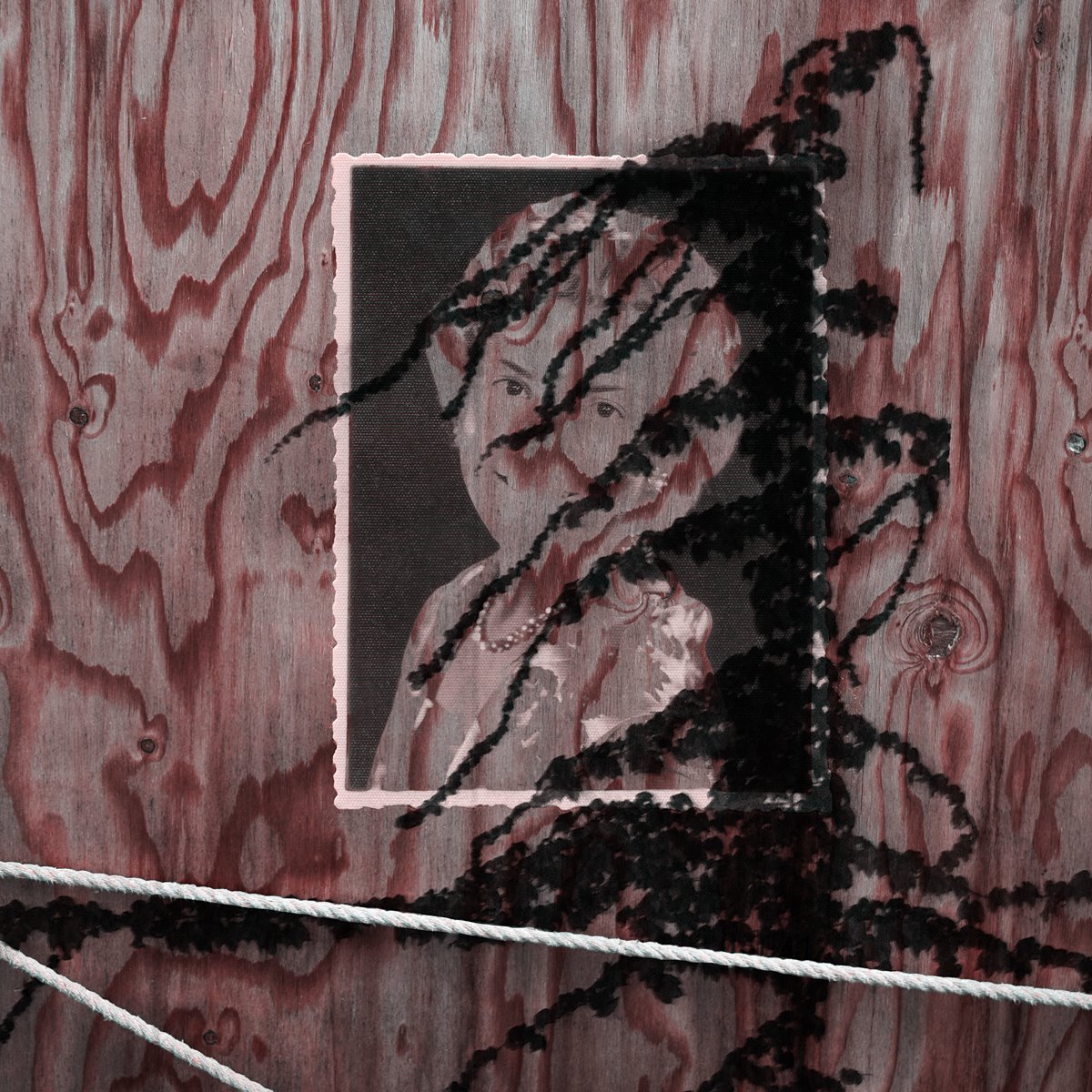
This image is a mixed-media work that integrates the original portrait of my father's ex wife with a pearl necklace. © Ioanna Sakellaraki
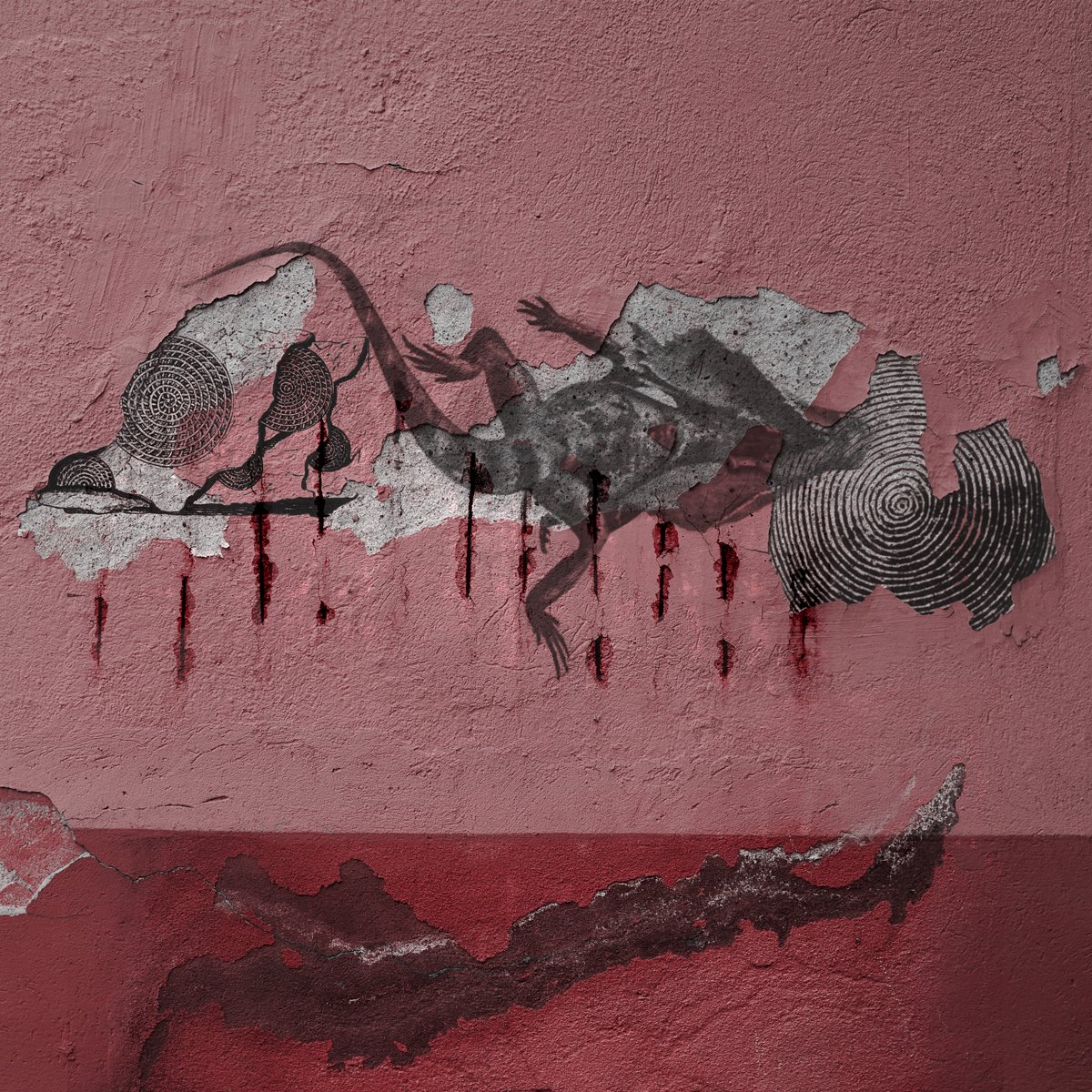
Lizards are part of the Dreaming stories of Aboriginals that relate to the creation of the natural world and the role of Ancestors and humans in that world. I acknowledge the land of these people and am inspired by the enormous cultural heritage they carry and preserve from ancient times. Here the lizard and the continuous patterns of the labyrinth are in a constant motion, restlessness yet immobile. The walls become my canvases, a nod to the pearly walls of the mollusk or the walls of the labyrinth, both passages and obstacles in the interplay between language and reality. © Ioanna Sakellaraki
About Artist
Ioanna Sakellaraki (b.1989) is a Greek visual artist and researcher currently working across Australia and Europe. Her work investigates the relationship between collective cultural memory and fiction. Drawing emphasis on the photographic object, process and encounter, she explores the boundaries of a primitive, yet futuristic vision of places and people. She was recently awarded a Doctoral Scholarship for undertaking her PhD in Art after graduating from with an MA Photography from the Royal College of Art. She is the recipient of The Royal Photographic Society Bursary Award 2018 and was named Student Photographer of the Year by Sony World Photography Awards 2020. In 2019, she was awarded with the Reminders Photography Stronghold Grant in Tokyo and the International Photography Grant Creative Prize. Nominations include: the Inge Morath Award by Magnum Foundation in USA, the Prix HSBC, the Prix Levallois and the Prix Voies Off in France. Her work has been exhibited internationally in art festivals and galleries with recent solo shows in Tokyo, Belfast, Braga and Berlin. Her projects have been featured in magazines such as The New Yorker, TIME, Aesthetica and Wallpaper and journals including The Guardian, Financial Times and Deutsche Welle. She has been invited as a guest speaker in the Martin Parr Foundation and the London Institute of Photography amongst others. Her monograph ‘The Truth is in the Soil’ is published by GOST Books.
WEB : ioannasakellaraki.com
IG : ioannasakellaraki_photography_
Ioanna Sakellaraki (b.1989) is a Greek visual artist and researcher currently working across Australia and Europe. Her work investigates the relationship between collective cultural memory and fiction. Drawing emphasis on the photographic object, process and encounter, she explores the boundaries of a primitive, yet futuristic vision of places and people. She was recently awarded a Doctoral Scholarship for undertaking her PhD in Art after graduating from with an MA Photography from the Royal College of Art. She is the recipient of The Royal Photographic Society Bursary Award 2018 and was named Student Photographer of the Year by Sony World Photography Awards 2020. In 2019, she was awarded with the Reminders Photography Stronghold Grant in Tokyo and the International Photography Grant Creative Prize. Nominations include: the Inge Morath Award by Magnum Foundation in USA, the Prix HSBC, the Prix Levallois and the Prix Voies Off in France. Her work has been exhibited internationally in art festivals and galleries with recent solo shows in Tokyo, Belfast, Braga and Berlin. Her projects have been featured in magazines such as The New Yorker, TIME, Aesthetica and Wallpaper and journals including The Guardian, Financial Times and Deutsche Welle. She has been invited as a guest speaker in the Martin Parr Foundation and the London Institute of Photography amongst others. Her monograph ‘The Truth is in the Soil’ is published by GOST Books.
WEB : ioannasakellaraki.com
IG : ioannasakellaraki_photography_
